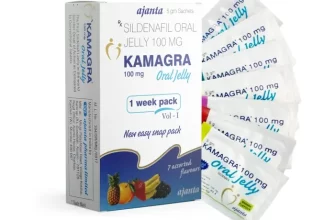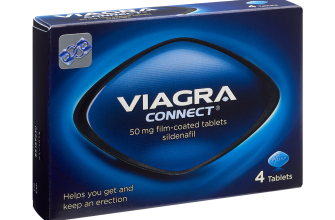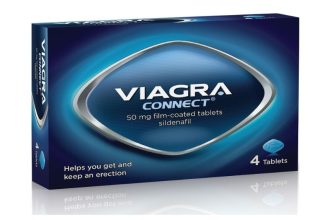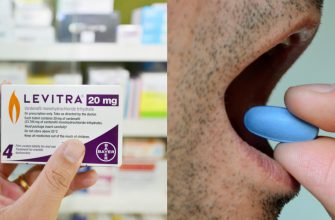Medicare Part D coverage for Viagra varies significantly depending on your specific plan. Expect to pay anywhere from $0 to $100 per prescription, or more, depending on your plan’s formulary and your copay. Many plans require prior authorization before covering Viagra.
To determine your exact out-of-pocket cost, check your Medicare Part D plan’s formulary and benefit details. You can find this information on your plan’s website or by contacting their customer service. This document lists covered medications and their associated costs.
Consider exploring plan options if your current plan has high costs for Viagra. Medicare Plan Finder, a website run by Medicare.gov, allows you to compare plans and their drug coverage, helping you find the most affordable option suited to your needs. Regularly reviewing your plan is key to managing prescription costs.
Important Note: Generic alternatives like sildenafil are often significantly cheaper than Viagra brand name. Ask your doctor about exploring these options to lower your overall medication costs. Your doctor can also provide information about financial assistance programs.
- What Does Viagra Cost on Medicare?
- Medicare Part D Coverage for Viagra
- Finding Coverage Options
- Factors Affecting Coverage
- Exploring Other Payment Options
- Viagra Alternatives Covered by Medicare
- Factors Affecting Coverage
- Finding the Right Plan
- Finding Affordable Viagra with Medicare
- Negotiating Lower Costs
- Exploring Additional Options
- Medicare and Erectile Dysfunction: Additional Considerations
What Does Viagra Cost on Medicare?
Medicare Part D prescription drug coverage helps pay for Viagra, but the exact cost varies significantly. Your out-of-pocket expense depends on your specific plan, your deductible, and your chosen pharmacy.
Many Medicare Part D plans cover Viagra as a Tier 2 or Tier 3 medication. Tier 2 drugs generally have lower costs than Tier 3 drugs. Your plan’s formulary (list of covered drugs) details specific cost-sharing amounts. Check your plan’s formulary or contact your plan provider to get the most accurate pricing information for your situation.
To find your plan’s cost, you should:
- Review your Medicare Part D Summary of Benefits.
- Check your plan’s website formulary.
- Contact your plan’s customer service department.
- Use Medicare’s Plan Finder tool to compare costs across different plans.
Remember, prices can change, so always confirm the current cost before filling a prescription.
| Factor | Impact on Cost |
|---|---|
| Plan Tier | Tier 2 drugs are generally less expensive than Tier 3 drugs. |
| Deductible | You must meet your deductible before coverage begins. |
| Pharmacy | Prices can vary between pharmacies. |
| Dosage | Higher dosages may increase costs. |
Consider exploring manufacturer coupons or patient assistance programs to potentially reduce your Viagra costs. These programs might offer additional discounts beyond your Medicare coverage.
Medicare Part D Coverage for Viagra
Medicare Part D generally doesn’t cover Viagra (sildenafil). However, some plans may cover other medications for erectile dysfunction if your doctor determines they’re medically necessary.
Finding Coverage Options
To determine if any alternative ED medications are covered under your specific Part D plan, check your formulary. This document lists covered drugs and their associated cost-sharing amounts (copays and deductibles). You can usually find your formulary on your plan’s website.
- Contact your plan directly: Calling your Part D plan’s customer service is the most reliable way to confirm coverage.
- Review your Explanation of Benefits (EOB): Your EOB details what your plan covered and what you owe. Reviewing past statements might show similar medications that your plan has covered.
- Consult your doctor: Discuss alternative treatments for erectile dysfunction that your Part D plan might cover. Your doctor can help you find suitable options within your budget.
Factors Affecting Coverage
Coverage decisions often depend on factors including:
- Your specific Medicare Part D plan: Coverage varies significantly between plans.
- Your doctor’s prescription: The plan may require a specific diagnosis or treatment protocol.
- Prior authorization requirements: Some plans require pre-approval for certain medications.
Exploring Other Payment Options
If Viagra isn’t covered by your Part D plan, explore these options:
- Manufacturer coupons: Several pharmaceutical companies offer patient assistance programs.
- Negotiating with your pharmacy: Sometimes, pharmacies offer discounts or payment plans.
- Generic alternatives: Generic versions of sildenafil might be more affordable.
Viagra Alternatives Covered by Medicare
Medicare Part D plans often cover alternative medications for erectile dysfunction, such as tadalafil (Cialis) and sildenafil (Viagra’s generic equivalent). Coverage varies depending on your specific plan and formulary. Check your plan’s formulary online or contact your plan administrator to confirm coverage and cost-sharing details. This information is crucial for budget planning.
Factors Affecting Coverage
Your out-of-pocket costs will depend on your plan’s tier system. Brand-name medications usually reside in higher tiers, leading to higher costs. Generic alternatives, like sildenafil, are often cheaper and found in lower tiers. Prior authorization might be required for some medications. Discuss your options with your doctor to find the most cost-effective treatment covered by your plan. Exploring alternative therapies, such as lifestyle changes, might also be an option.
Finding the Right Plan
Medicare’s plan finder tool can help you compare Part D plans and their formularies. Pay close attention to drug coverage details when making your selection. You can refine your search by specifying medications you need covered. Carefully review coverage before enrolling. This allows you to choose a plan that fits your needs and budget.
Finding Affordable Viagra with Medicare
Medicare Part D, the prescription drug plan, covers Viagra if your doctor deems it medically necessary for a specific condition like pulmonary hypertension. Check if your Part D plan covers sildenafil (the generic version of Viagra), which is often more affordable. Many plans have formularies – lists of covered drugs – with varying levels of coverage (tiered co-pays). Review your plan’s formulary to understand your costs.
Negotiating Lower Costs
Contact your doctor. They can write a prescription for sildenafil, the generic alternative, significantly reducing your out-of-pocket expenses. Explore manufacturer coupons or patient assistance programs; these can sometimes offset costs. Compare Part D plans during the annual open enrollment period (October 15th to December 7th). Switching to a plan with better coverage for sildenafil might save you money. Consider using a mail-order pharmacy; they frequently offer lower prices than retail pharmacies.
Exploring Additional Options
Check for discounts at your local pharmacies. Some offer discounts or have programs for seniors. If your income is low, inquire about assistance programs from pharmaceutical companies or local charities. Always confirm coverage details with your insurance provider before filling your prescription. Remember, prices vary based on your specific plan and location.
Medicare and Erectile Dysfunction: Additional Considerations
Check your Medicare plan’s formulary. Not all medications are covered, and coverage levels vary. Some plans may require pre-authorization for ED medications. Contact your plan provider directly for precise details on coverage and any cost-sharing requirements.
Explore Part D plans. Medicare Part D covers prescription drugs. Switching to a plan that covers your needed medication at a lower cost could significantly reduce your out-of-pocket expenses. Compare plans annually during the open enrollment period.
Consider alternative treatments. Lifestyle modifications like diet, exercise, and stress management can positively impact erectile function. Discuss these options with your doctor; they may be helpful alone or in conjunction with medication.
Look into patient assistance programs. Pharmaceutical companies often offer programs that help patients afford their medications. These programs may reduce or eliminate your cost for Viagra or other ED drugs. Check the manufacturer’s website or contact your physician for details.
Negotiate price. Don’t hesitate to discuss cost with your physician or pharmacist. They may be able to suggest alternatives or offer guidance on cost-saving options.
Be aware of potential drug interactions. Inform your physician of all medications you currently take to prevent harmful interactions. This is critical for your safety and the effectiveness of your treatment.










